Warning: Graphic photos.
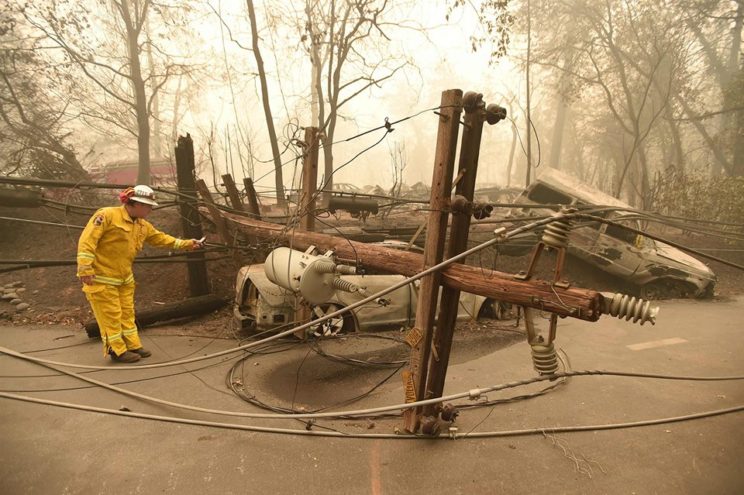
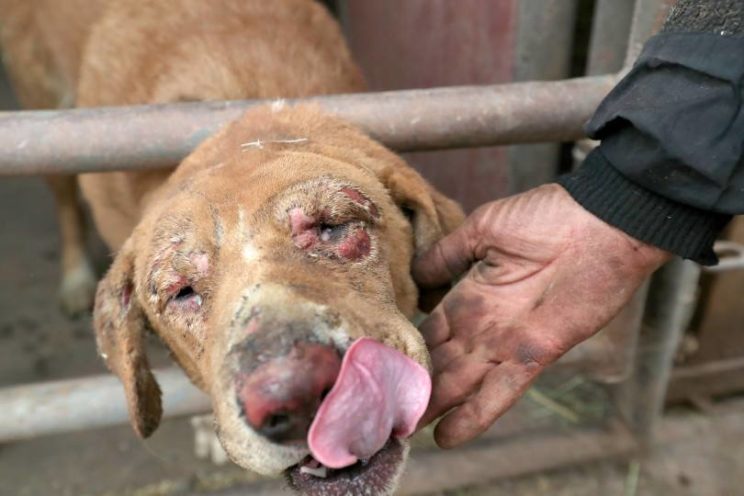


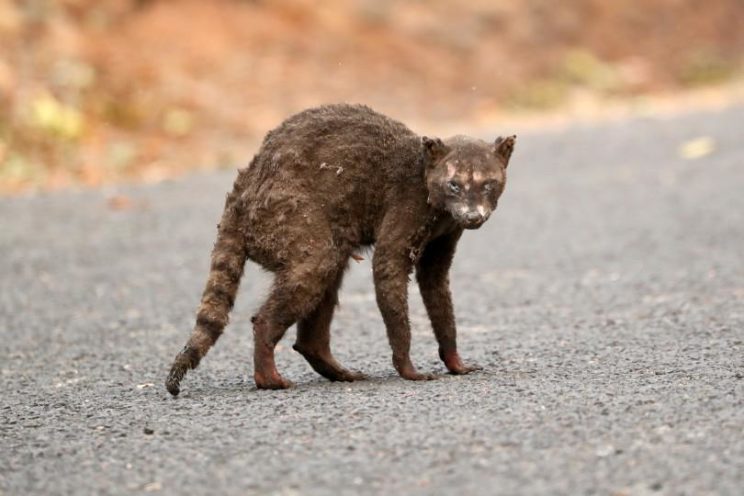
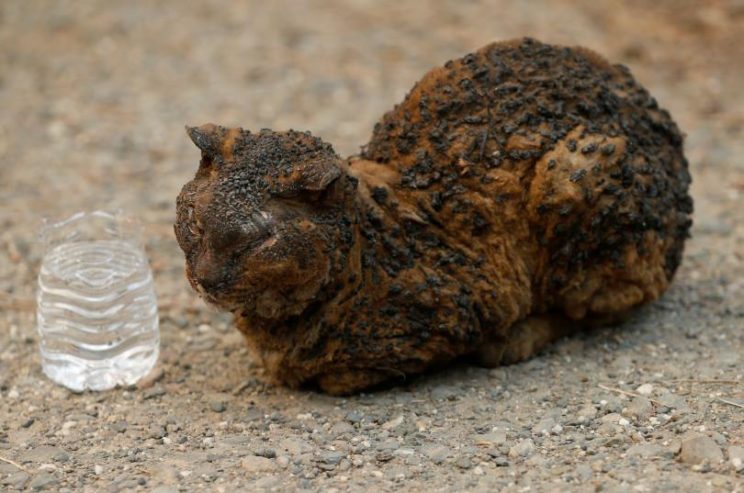

I am so sorry about posting these photos of animals burned in the Camp fire here in Northern California; I truly am. But PG&E must be held accountable. Over 60 people are dead, hundreds are missing, thousands evacuated, tens of thousands of lives destroyed. And that doesn’t include the multitudes of animals who have suffered, been burned, lost their homes, and lost their lives.
Although the official cause of the fire has not been officially determined, “Pacific Gas & Electric Co. has informed state officials one of its power lines in Butte County suffered an outage at about the time that county’s devastating Camp Fire ignited in the hills near the town of Pulga.”
“California authorities are [also] investigating PG&E equipment as a possible cause.”
There is also evidence that they may have known about problems ahead of time.
And at least one state official suggests they should not be allowed to do business in California. There’s more evidence; a lot more.
Even worse, PG&E could have prevented all the recent fires they have already been found responsible for. They are sitting on $1 billion in credit reserves but they refuse to upgrade their infrastructure and put power lines underground.
One of the many fronts on which I wage battle for animals is the protection of local forests and trees which provide habitat, food, and sanctuary for wild animals through Save The East Bay Hills. Of late, this effort to protect trees has included also battling PG&E which refuses to modernize their outdated infrastructure and thereby limit the risk of fire related to their antiquated equipment. Instead, it has embarked on an effort to destroy vast numbers of trees across its 100,000 miles of transmission lines.
My group wrote the California Public Utilities Commission demanding that PG&E instead:
– Install High Impedance Arc Fault Circuit Interruption Gear (lightning fast circuit breaker technology that can cut the power to a broken electric line before it hits the ground eliminating any danger associated with a downed line, such as fire or electrocution);
– Replace small gauge and/or uninsulated distribution and power pole wire with strong insulated wire;
– Replace wooden power poles with metal power poles that are capable of supporting stronger, heavier wire and the additional communication equipment that would also eliminate arcing of downed wires; and,
– Put wires undergound.
Please help me increase pressure on the CPUC to do so (and to stop PG&E from vilifying trees for their own villainous conduct) and sign my petition by clicking here.
P.S. Just when you think they could not sink any lower, they manage to drain a little more water from the pool. The company is now embarking on “a campaign to get bailed out [of liability for the Camp fire] by California’s lawmakers—as it was after last year’s fires.” Meanwhile, their CEO makes over $10 million in compensation. On top of that, the Board President got over $3.5 million. And various Vice Presidents each made over $1 million. Those who continue to put profits ahead of public safety should be put in jail not bailed out by taxpayers.
————–
When I posted this on Facebook, a few commenters claimed California Governor Jerry Brown was to blame for lack of “forest management.” This is not accurate and is little more than a Trump talking point in order to harvest trees for commercial gain. Every wildfire in California for the past several decades, including the Camp fire, has been a grass and brush fire, and to the extent woodlands have been involved, it is oak/grasslands (basically grasses, islands of shrubs, and some oaks). Not most fires. Not even the vast majority. All of them. You can see it for yourself. Really pay attention when you look at the photos coming out of California and what you will often notice are houses burned to the ground and lands where grasses, scrub, and chaparral grew totally scorched, with trees often standing among the devastation, unscathed. Why? Trees are naturally fire-resistant.
And yet, both the Trump Administration and ecological nativists continue to spread the false claim that removing fire-abating trees or managing those forests will reduce the risk of fire. To the contrary. It not only puts us at greater risk for fire, it increases the speed and severity of fire should one occur. In addition, it is heavily reliant on cancer causing pesticides, exacerbates climate change, destroys beauty and character, and devastates animal habitat.
David Maloney, the former Chief of Fire Prevention for the Oakland Army Base and a member of the 1991-1992 Task Force on Emergency Preparedness and Community Restoration (Task Force) here in Oakland that was impaneled after a devastating fire in the hills writes that, “Fire Science has proven that every living tree—regardless of its species—due to its moisture content and canopy coverage of ground fuels, contributes to wildfire hazard mitigation.”
Why? All trees perform four vital functions in preventing or slowing the spread of grass and chaparral fires:
- They retain a lot of moisture (they are basically reservoirs of water) and thus resist ignition;
- They collect, with their leaves, moisture from the night air and drip it on the natural vegetation beneath them;
- The tops (canopies) of the trees create shade so this moisture is not evaporated by the sun by mid day; and,
- They act as windbreaks which slow the velocity of the wind that pushes grass and chaparral fires.”
As a result, “Removing trees of any species and wanting grasses and chaparral to replace them greatly increases the chance of a catastrophic, unstoppable fire.” In his critique of the use of deforestation as means of fire abatement, Chief Maloney has noted that any approach to mitigating fire risk by destroying trees:
- “Ignores the U.S. Forest Service analysis dated September 27, 2013, which recommends against removing eucalyptus trees;”
- “Violates the recommendations made by the 1991/1992 Task Force on Emergency Preparedness and Community Restoration;”
- “Has no basis in fire science;”
- “Violates fundamental principles of Wildland Fire Prevention;”
- “Is ideologically motivated;” and,
- “Creates the conditions for a perfect firestorm.”
Chief Maloney’s concerns are echoed by:
- The U.S. Fire Administration Technical Report on the 1991 Oakland Tunnel fire which concluded that “brush fuel types played a significant role in the progression of the fire” and that brushland made up “a large portion of the available fuel.”
- The U.S. Geological Survey which notes that only about 3% of fires occur in forests. The remainder—97%—burn mostly in shrublands and grasslands (and urban areas).
Furthermore, a U.S. Forest Service study, “Reducing the Wildland Fire Threat to Homes,” concludes that reducing the risk to homes from a wildfire does not involve extensive wildlands management. The study shows that “home losses can be effectively reduced by focusing mitigation efforts on the structure [such as requiring a fireproof roof] and its immediate surroundings.” It noted that, “Extensive wildland vegetation management does not effectively change home ignitability.”
Experience has born this out. When San Francisco’s Angel Island erupted in flames in 2008, it was the areas where the eucalyptus were cut down that burned; burned to the very edge of the eucalyptus forest, then stopped for lack of fuel: “At the edge of the burn belt lie strips of intact tree groves:a torched swath intercut with untouched forest.”
A 1991 Oakland Tunnel fire survivor writes: “I was a student at Cal during the 1991 fires. I lived in the Berkeley hills above campus near Strawberry Canyon. The eucalyptus and other trees saved the houses on my street by serving as a barrier between us and the fire.”
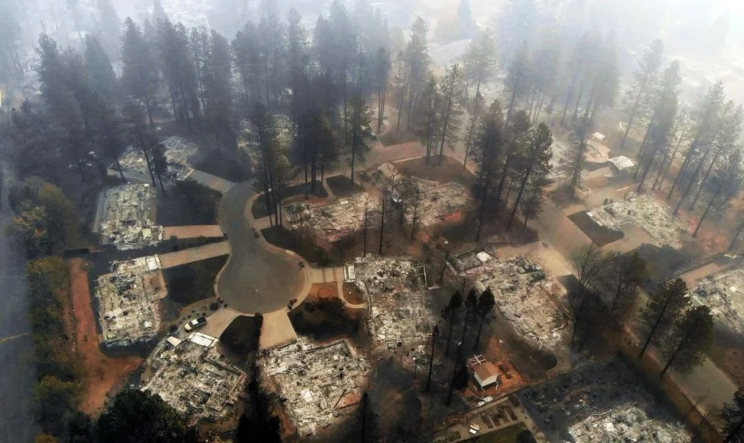
And more recently, the photo above shows homes completely burned to the ground in Paradise, but not the trees abutting those homes.
Having said this, I agree that Gov. Jerry Brown is guilty of malfeasance here, but not for failing to allow forest harvesting (indeed, he has doubled it from the prior administration). He is instead guilty for four reasons. First, for bailing out PG&E after it caused the last round of fires. Since consumers are footing the bill, PG&E has no incentive to change and they haven’t.
Second, for failing to mandate that PG&E upgrade its shoddy and antiquated infrastructure that was the cause of the last fires and is the likely culprit of this fire.
Third, for giving in to nativists and removing fire-abating trees in favor of fire-prone grass and shrub (photo below).
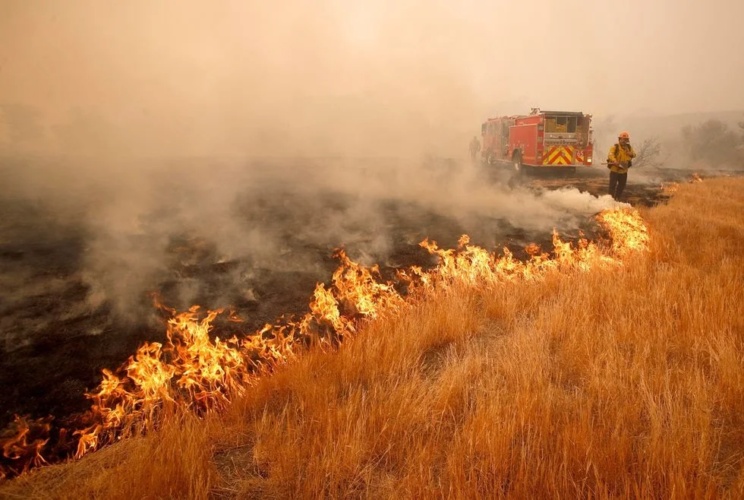
Fourth, for failing to allow the planting of trees in California with the millions we are spending ostensibly to combat climate change because those trees, like eucalyptus and pine, are deemed “non-native.”
The labels “non-native” and “invasive species” are terms that have entered the lexicon of popular culture and become pejorative, inspiring unwarranted fear, knee-jerk suspicion, and a lack of thoughtfulness and moral consideration. They are language of intolerance, based on an idea we have thoroughly rejected in our treatment of our fellow human beings—that the value of a living being can be reduced merely to its place of ancestral origin. Moreover, where a tree originated has nothing whatsoever to do with its flammability.
By conflating these two issues, nativists have found a way to scare the public into supporting their environmentally devastating agenda, even if it means jeopardizing public safety in the process.
In short, we need more trees; not fewer.
————-
Have a comment? Join the discussion by clicking here.